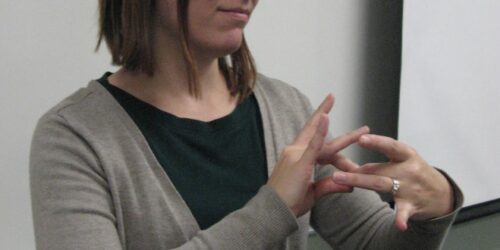
Food for Thought: An End-of-Year Reading List for Decolonization and Indigenization in Our Courses
Engaging in Truth and Reconciliation in educational spaces begins and continues with listening, which can also take the form of reading! For those of us who would like to take time to listen and/or read and reflect over the next few weeks, some of us in Teaching and Learning have recommended texts which have impacted us in the last year. Each of the texts recommended can be accessed with a direct link.
Laura’s Picks:
My first pick is a 2021 article by Dwayne Donald, who is a descendent of the amiskwaciwiyiniwak (Beaver Hills Cree) and a Tier 1 Canada Research Chair and Professor in the Faculty of Education at the University of Alberta. I believe it can be an inspiration for anyone rethinking their course planning and their course delivery with Truth and Reconciliation in mind.
In “We Need a New Story: Walking and the wâhkôhtowin Imagination,” Donald notes that the colonial story passed on in colonial education denies any meaningful relationship between Canadians and Indigenous people of Turtle Island. Drawing on the Cree concept of wâhkôhtowin, (the understanding of relationality as extending beyond the merely human), Donald encourages walking as a way to rethink curriculum. In the face of the factory model of education which prioritizes the chair – sitting in order to think – Donald encourages the art of walking in nature to reopen connection with the energy and life force of the Land itself, and to open ourselves to a new respect for all our relations. Says Donald, “If we wish to take seriously the task of addressing the most troubling issues we face today, we must be willing to consider insights from knowledge systems that express alternative ways of being in the world” (2021, 60).
Donald, D. (2021). We Need a New Story: Walking and the wâhkôhtowin Imagination. Journal of the Canadian Association for Curriculum Studies, 18(2), 53–63.
For faculty considering ways to indigenize not only course content, but ways of teaching and learning content, I recommend an article by four Indigenous educators at the University of Calgary (Louie, et al., 2017). “Applying Indigenizing Principles of Decolonizing Methodologies in University Classrooms” is a case study which explores indigenizing practices inspired by the work of Linda Tuhiwai Smith. In applying her 25 Indigenous projects to 25 principles for teaching, each author shares Indigenizing practices for the post-secondary classroom.
Louie, D. W., Poitras-Pratt, Y., Hanson, A. J., & Ottmann, J. (2017). Applying Indigenizing Principles of Decolonizing Methodologies in University Classrooms. Canadian Journal of Higher Education (1975), 47(3), 16–33.
Lauren’s Picks
“Indigenization as Inclusion, Reconciliation, and Decolonization: Navigating the Different Visions for Indigenizing the Canadian Academy” is an article which looks specifically at efforts Canadian colleges and universities have made to “indigenize” since the release of the Truth and Reconciliation’s Calls to Action. The authors explore different approaches post-secondary institutions have taken and identify a spectrum from “indigenous inclusion” where efforts are made to include more Indigenous students, faculty and staff and to help them succeed within existing structures, to “decolonial indigenization” where the post-secondary institution is “fundamentally transformed by deep engagement with Indigenous peoples, Indigenous intellectuals, and Indigenous knowledge systems for all who attend.” The authors also offer some advice on ways forward that are “bottom up” and have the potential to lead to a richer, more respectful coexistence.
Gaudry, A., & Lorenz, D. (2018). Indigenization as inclusion, reconciliation, and decolonization: Navigating the different visions for indigenizing the Canadian Academy. Mount Royal University.
For many years I worked as an Art Educator at the Art Gallery of Ontario. Much like post-secondary institutions over the past few decades, museums have been doing some vital soul-searching and asking important questions about power; colonial legacies; indigenous representation (or lack thereof) within their walls; and how to make meaningful institutional change with Indigenous partners. Kent Monkman is an extraordinary interdisciplinary Cree artist who uses humour as well as themes of grief and longing to appropriate and subvert western art historical traditions and methodologies to tell very different narratives about Canadian history. Now internationally recognized, his process serves as an example of how one might work “within” existing established institutions to upend problematic power dynamics and put indigenous perspectives in conversation with dominant ideologies. Monkman discusses his approach, and how his work serves as a counterpoint in this interview with the Aboriginal People’s Television Network.
Would you like add a suggestion to this reading list? Send your idea to teachingandlearning@conestogac.on.ca






